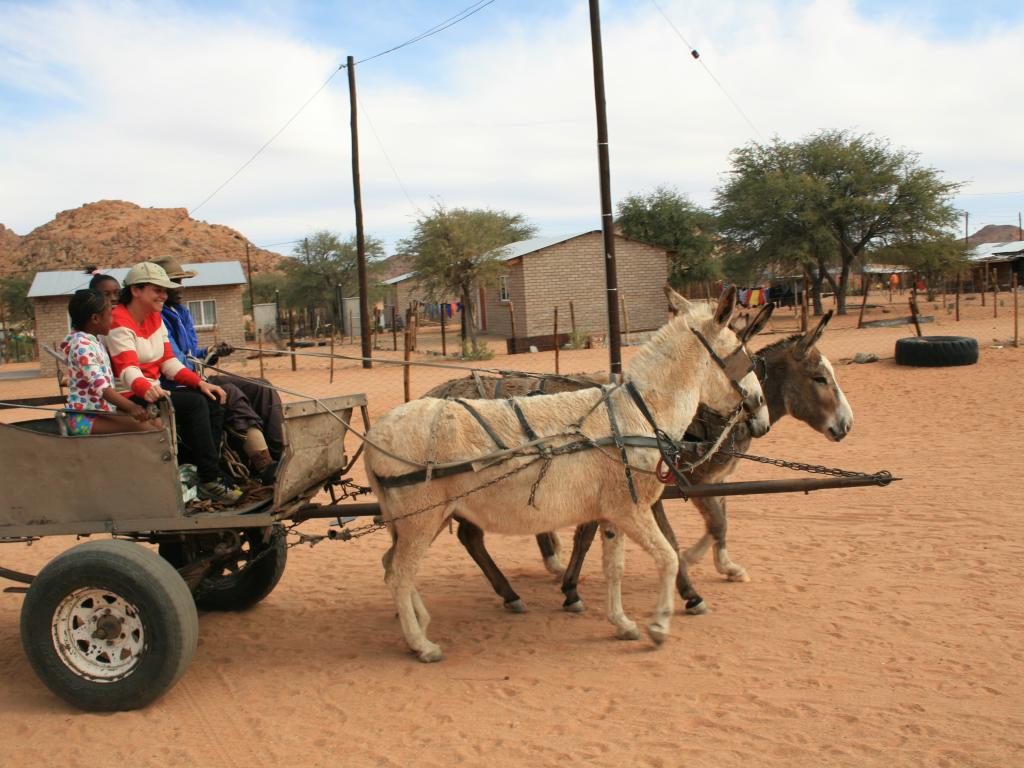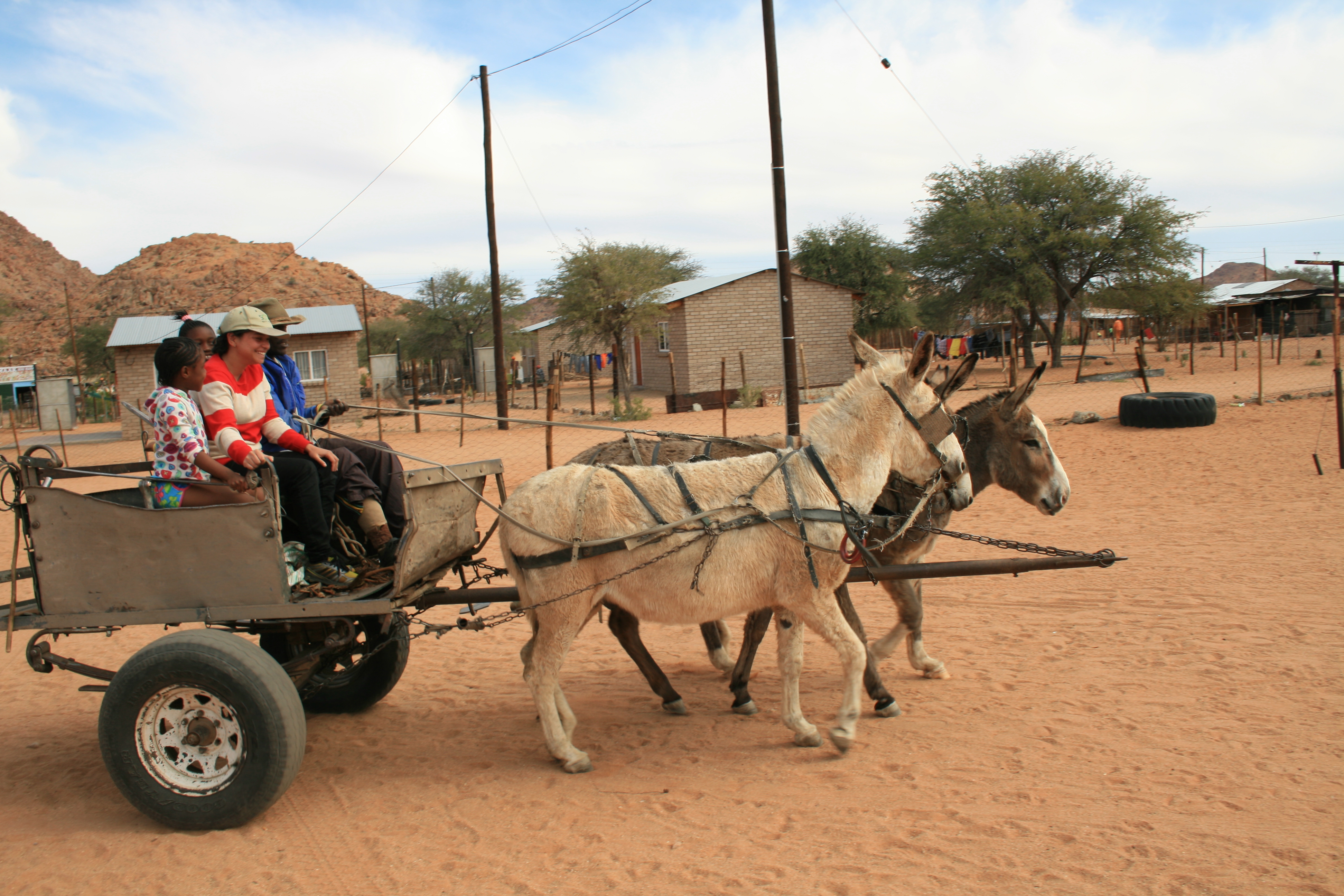Getting tied to Riemvasmaak...


Gabi enjoying the thrills of a donkey cart ride in Riemvasmaak (Photo: M.T. Hoffman)
Few ordinary South Africans have the chance to visit and interact with the locals of the small, remote settlement of Riemvasmaak in the Northern Cape. So as a foreign student, this opportunity must indeed be a novel one…
Gabi Fleury is one such student. She is a Brazilian-American dual citizen, and is currently completing her MSc in Conservation Biology with the Percy FitzPatrick Institute of African Ornithology. This is a 13 month intensive course and attracts students worldwide. Gabi, and her 11 classmates, have recently completed their coursework component of their MSc and their focus is now on fieldwork and collecting data for their mini-dissertation. Gabi has chosen to focus on long-term environmental change over twenty years in the area of Riemvasmaak in the Northern Cape. She will be using vegetation condition and growth as a proxy of several different growth forms as well as repeat photography taken as part of a larger study. Her main goal is to try to access these differences in the context of grazing and climatic drivers, as well as to access these drivers in the context of changing livelihoods and land use impacts. Timm Hoffman is her supervisor and they recently spent nine days in Riemvasmaak, collecting data for her thesis and interviewing livestock owners about livelihood and environmental change.
So what were her first impressions of Riemvasmaak? “It is dry. Very dry. We were only an hour outside of Cape Town when it already became noticeably drier, and by the time you get up to my study site -which is as close to Namibia as you can be without being in Namibia - it was like a flora-speckled dust bowl. Remarkably, many plants manage to do very well or at least decently that far North, and they are gritty little fighters, some dramatic, like the mesic-evolved quiver trees or the visually striking aloes, and some rather less so. The second is that everything is in Afrikaans, or at least most things are, and the language switch out of Cape Town happens fairly quickly. I don’t know much Afrikaans, and luckily had two people to help with translating in the field, but after nine days up there, I did manage to learn just enough to introduce myself, say please and thank you, and occasionally and not very usefully question people about their caracals. The third is the smell, which is also immediately apparent. Riemvasmaak smells dry, as if the earth is just waiting to be lifted and to blow into dust. There’s a scent of livestock, and smoke, and fire. It’s as characteristic as the deep reddish soil, or the eternal spread of those wide blue horizons.”
And what exactly did Gabi get up to in Riemvaskaam? “I learned how to do size class distributions and how to measure things with a ranging rod. I learned to finally appropriately identity the pointy flora that I inevitably would step on. I made determined eye contact with inquisitive bulls at stockposts, learned to speed-count goats, ride in a donkey-cart, crack a bullwhip at the air and how to write clear and legible notes while ignoring lambs gathering around my feet and nibbling gently at my knees. I learned just how far goats can walk after tailing them for five kilometres, learned what they grazed upon, what they avoided. “
To read more about Gabi’s recent trip to Riemvasmaak, see her blog. Gabi’s MSc is funded by Rotary International.
Article by Esther Mostert
